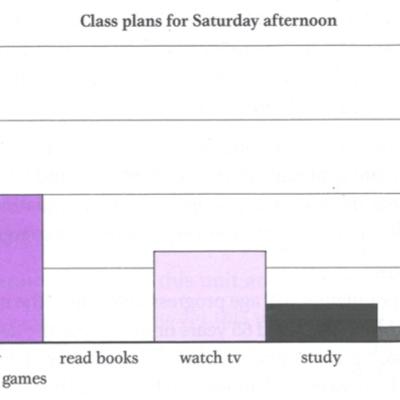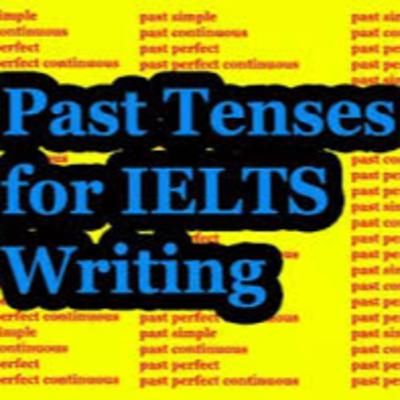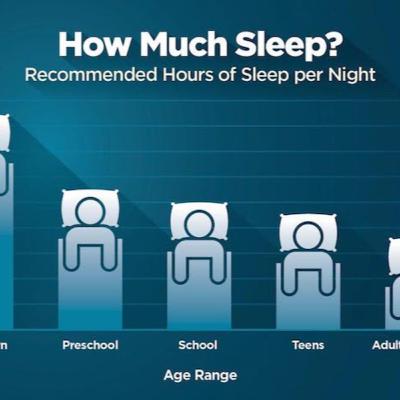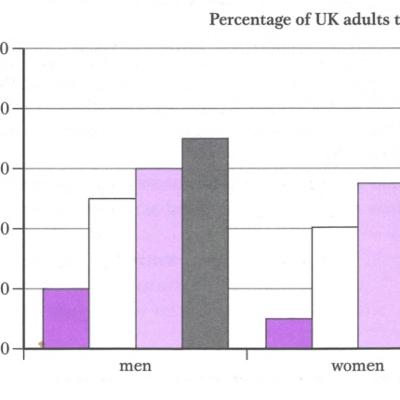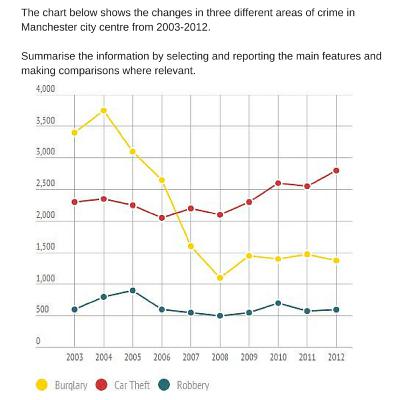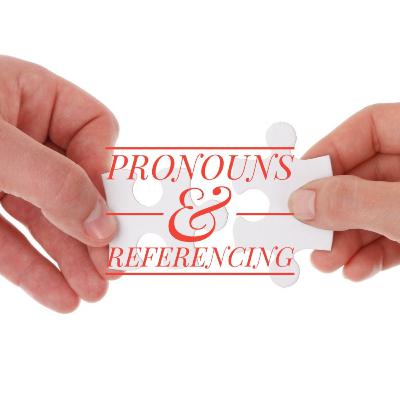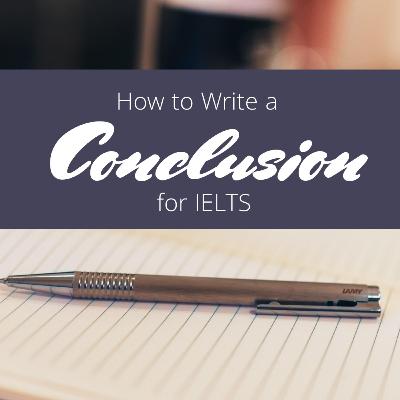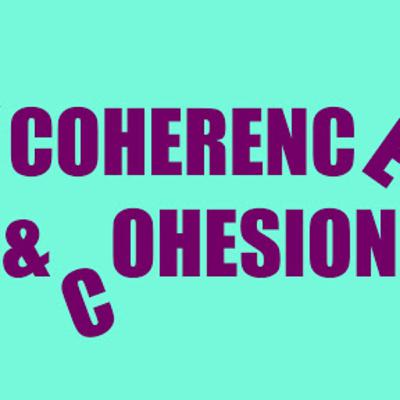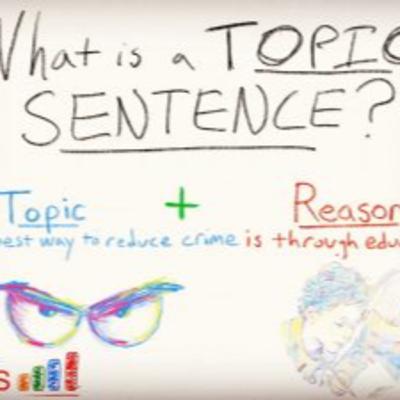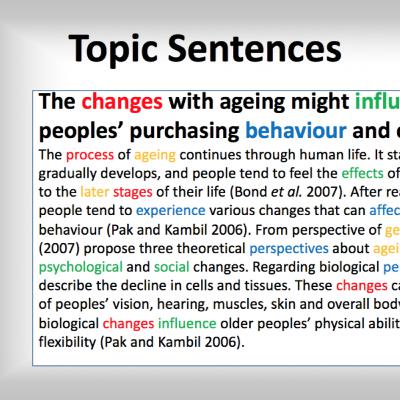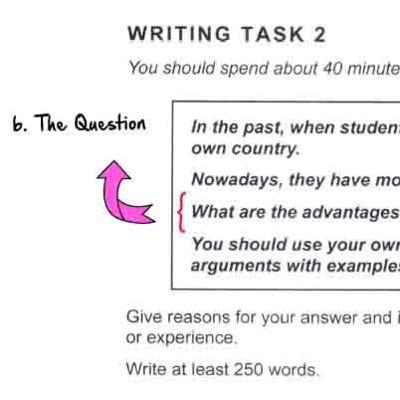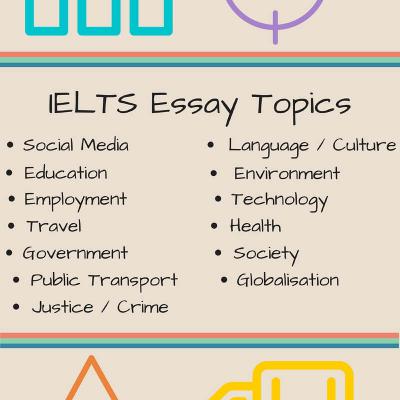Discover Gold Coast IELTS Podcast
Gold Coast IELTS Podcast

Gold Coast IELTS Podcast
Author: Quality IELTS exam podcasts
Subscribed: 362Played: 3,409Subscribe
Share
© Quality IELTS exam podcasts
Description
Welcome to the Gold Coast IELTS podcast. This podcast is specifically for my students living on the Gold Coast and anywhere else in the world. This is where you can find the best IELTS writing preparation tips on the web. If you have any questions, please drop me a line. Expect one or two new podcasts every week. Enjoy! Also, please visit the website at:
www.goldcoastielts.com
I have podcasts, a blog, and all the Cambridge IELTS exams with all listening MP3s (Cambridge IELTS Academic 5-14).
www.goldcoastielts.com
I have podcasts, a blog, and all the Cambridge IELTS exams with all listening MP3s (Cambridge IELTS Academic 5-14).
33 Episodes
Reverse
www.goldcoastielts.com
www.g.page/gcielts
Welcome to Gold Coast IELTS in Southport and online!
OK guys so adverbs are those words that (often but not always) end in –ly. They give us extra information about verbs, adjectives or other adverbs. Adverbs are the word that tell us how (manner), where (place), when (time), how often (frequency), or how much (intensity) something happens or is done. An adverb can be a single word ("sometimes") or a phrase ("from time to time").
So how do we use adverbs? Well, they can tell us about
1. Manner – are often formed by adding –ly to the adejctive form:
careful – carefully happy – happily
These adverbs usually come after the verb (and object if there is one).
I plan my trips very carefully. (not I plan very carefully my trips)
2. Place – usually come after the verb:
It was the first time I had been there.
Try to stay near the old part of the city.
3. Time – such as today, tomorrow, now, since 1996, or for three minutes can go at the beginning or end of a clause:
I had a very memorable trip last year. (or Last year I had a very memorable trip)
4. Frequency – usually come before the verb but after be or an auxiliary verb:
I often travel for my job.
I have always enjoyed my visits there.
He’s never late.
5. intensity – affect the strength of adjectives or adverbs
PIC
The adverbs at the stronger end of the scale (absolutely, completely, totally) can only be used with some adjectives. These tend to be ‘extreme’ adjectives that suggest a limit in their meaning (e.g. terrifying, excellent, exhausted). Other ‘non-extreme’ adjectives (e.g. frightened, good, tired) never collocate with these stronger adverbs. Compare:
There are some absolutely stunning examples of Indian silk embroidery. (not fairly stunning)
The people are very friendly. (not absolutely friendly)
Let’s take a look at this sort of grammar in an IELTS task 2 style essay.
Do you best to choose the correct option before you listen to the podcast.
Environmentalists and conservationists tell us that there are ways that each of us can help to (1) very reduce / greatly reduce our impact on the planet. We can (2) work hard / hardly work to conserve energy and we can invest in equipment to help us create our own power. People (3) say often / often say that they want to save the planet, but the only way to do this is to (4) take immediately action / take action immediately.
It is (5) really important / important really for individuals to (6) responsibly act / act responsibly and try to reduce their contribution to greenhouse gases. There are several ways we can do this. For example there are mini wind turbines that you (7) can install easily / easily can install on your roof as well as very efficient solar panels that (8) work good / work well all year round to provide electricity.
But if all this is too expensive, there are other ways to conserve energy that actually save you money. In cooler weather, simply keep the heat (9) inside safely / safely inside by closing doors after you so that the warmth doesn’t escape. It is (10) absolutely essential / very essential that we all take this seriously and do our best to lead a more sustainable life.
Answers: 1. greatly reduce 2. work hard 3. often say 4. take action immediately 5. really important 6. act responsibly 7. can install easily 8. work well 9. safely inside 10. absolutely essential
So that’s it for the Gold Coast IELTS blog for today guys.
www.goldcoastielts.com
www.g.page/gcielts
Today let’s take a look at the future perfect continuous tense and how it can be effectively used in the IELTS exam to explain what will be happening at a particular point in time in the future.
Firstly, how do we make the future perfect continuous tense? Basically, it is made in the following way:
will + (not) have + been + verb-ing
So how do we use the future perfect continuous tense? Basically it is used to show how long an activity or situation has been in progress before a specified time in the future. We usually mention the length of time. For example:
By the end of the month, I’ll have been studying at this school for four years.
Now let’s check out how the future perfect continuous tense can be used in a real IELTS style task 1 writing task. Check out the bar chart, then try and complete the sentences using the future continuous tense.
1. Twelve students ---- on Saturday afternoon.
2. The students ---- books on Saturday.
3. The largest group of students ---- this Saturday afternoon.
4. A similar number of students ---- and ---- this weekend.
5. A very small number of students ---- this weekend.
6. Approximately 15 students ---- this weekend.
Answers: 1. will be watching TV 2. won’t (will not) be reading 3. will be playing computer games 4. will be doing sport; studying 5. will be resting 6. will be seeing friends.
OK guys, so any time you get a chart that depicts something HAPPENING in the future, you can use the future perfect continuous tense to describe it. It’s definitely a great way to show off your knowledge of future time, and it you use it in the appropriate situation, you can get a high mark for your grammar criteria.
#ielts #goldcoastielts #southportielts #ieltsgoogleclclassroom #ieltscoaching #ieltswriting #ieltsspeaking
www.goldcoastielts.com
www.g.page/gcielts
There is no doubt that in IELTS we need to be able to describe what has happened and what is happening, but we also need to be able to make predictions for the future, and we can use ‘will’, ‘going to’, and a combination of other words to do this.
1. ‘will’ can be used to
- make predictions that are based on our opinions of our past experience:
I think it’ll be extremely hot there.
- talk about future events or facts that are not personal:
The best player on the tour will get a special trophy.
2. ‘going to’ can be used to
- talk about events in the future we have already thought about and intend to do:
We’re going to hire a mini bus.
- make predictions when there is present evidence:
Well, we’re certainly going to have a varied trip. (I am judging this from what I already know about the plans)
3. ‘will’ and ‘going to‘ can follow words like think, doubt, expect, believe, probably, certainly, definitely, and be sure to to show that it is an opinion about the future.
I think it’s going to be a great trip.
It’ll probably rain every day.
So when do we use ‘Going to’ and when do we use ‘will’?
We’re going to have a very varied trip! (prediction based on what I know about the weather)
I’m sure we’ll enjoy it. (prediction based on my guess)
Now let’s see how these new ideas can be put to use in an IELTS task 2. Read the question, and then think where each phrase can be put.
"Thanks to modern technology, there have been enormous changes in the workplace over the past 100 years.
What are the most significant changes that have occurred and what changes do you foresee in the next 100 years?"
are going to feel are going to happen are likely to lead to
are likely to occur are predicted to work is likely to become
will be will continue will develop
will find will have will result
... So, now let us consider the changes that (1) ---- in the next 100 years. Unfortunately, I believe that not all changes (2) ---- for the better. For example, in the future more and more people (3) ---- work from home and so they (4) ---- more isolated from their colleagues. On the other hand, they (5) ---- (certainly) greater freedom to choose their working hours.
A further possible change is that handwriting (6) ---- obsolete. We are already so used to using a keyboard that today’s children are losing the ability to spell without the aid of a word processor.
Without a doubt, even greater changes (7) ---- in technology used in the workplace. Computers (8) ---- (undoubtedly) to grow even more powerful and this (9) ---- (probably) in an even faster pace of life than we have now. Let us hope that our employers (10) ---- a way to reduce the stress on workers this fast pace can bring.
I also think these improvements in technology (11) ---- even more globalisation than now and companies (12) ---- very strong international links.
Predictions can be used in all IELTS writing tasks, especially task 2 and academic task 1.
www.goldcoastielts.com
www.g.page/gcielts
The past simple, past perfect, and past perfect continuous tenses are great to use in IELTS. We can use them to compare actions that happened in the past and show the examiner how deep our knowledge of time is.
Firstly let’s look at the past perfect simple. This tense is made with had + past participle. It is used in the following ways.
1. When we are talking about the past and want to mention something that happened earlier. Notice that the adverb (already) goes between had and the past participle.
Mozart’s father was a composer and his grandfather had also been a musician.
2. We can use words like when, as soon as, by the time, after to show the order of events.
When Mozart was born, five of his siblings had already died.
3. To talk about an indefinite time before a particular time, use words like always, sometimes, never, before, by + fixed time.
His family were richer than they had ever been before.
Next, the past perfect continuous is made with had been + -ing. It is used in the following ways.
1. To focus on how long an activity continued or to focus on the activity itself.
Times were hard and the family had been struggling for some time. (to show how long)
Mozart’s sister was extremely gifted at the keyboard and she had been making excellent progress.
Note that we cannot use the past perfect continuous to say how many times something happened.
GOOD – I knew the way as I had visited her several times before.
NOT GOOD – I knew the way as I had been visiting her several times.
Let’s look at how all of this will work in an IELTS task 1. Look at the chart below, then try and decide which verb will be used – the past simple, or the past perfect simple.
The chart shows the percentage of people aged 65 and over in the United States between 1900 and 2000. In the year 1900 jus over 4% of the population (1) was / had been aged over 65. However, by 1960 this figure (2) doubled / had doubled.
The number of people aged between 75 and 84 (3) remained / had remained fairly steady between 1900 and 1930, making up only 1-1.3% of the population. The figure (4) began / had begun to rise more significantly in 1940 and by 1970 it (5) tripled / had tripled to reach 3% of the population.
Although there (6) was / had been no change in the number of people aged 65-74 between 1960 and 1970, the number of people aged 75 and over (7) increased / had increased during this time. By the year 2000, 12.4% of the US population (8) reached / had reached the age of 65 or more, although this was slightly lower than in 1990 when it (9) peaked / had peaked at 12.6%.
The chart shows that today people in the United States can expect to live longer than in 1900. By the year 2000 more then 12% of the population (10) managed / had managed to live to the age of 65 and over compared to only 4.1% in 1900.
That’s it for today’s podcast. Try your best to use these past time tenses correctly when you are describing IELTS task 1 charts.
#goldcoastielts #southportielts #ieltscoaching #ieltsgoogleclassroom #ieltswriting #pastperfectielts #simplepastielts #pastperfectcontinuousielts
www.goldcoastielts.com
www.g.page/gcielts
Present tenses are used a lot in the IELTS exam, especially in the task 1 task. The two kinds of present tense verb in English are present simple and present continuous, and both of them have different functions (ways and times to be used). Lets look at each one separately, and then see how they can be used in the IELTS exam.
The present simple tense is made with the bare infinitive verb, and has a number of functions.
1. Regular habits or repeated actions
I get up really early and practice yoga for an hour each day.
I use the internet just about everyday.
2. Permanent situations
My parents own a restaurant.
3. Facts or generally accepted truths
Students don’t generally have much money.
4. To give instructions or directions
To start the program, first click on the icon on the desktop.
The present continuous is made with a ‘be’ verb + the –ing form of the verb. It also has a number of functions.
1. To talk about present situations
My cousin is living in Thailand at the moment.
2. To talk about actions that are happening at the moment of speaking
I’m waiting for my friends.
3. To talk about trends or changing situations
The price of petrol is rising dramatically.
4. To show things happen more often than expected, or to show envy or to criticise
My mum’s always saying I don’t help around the house enough! (complaint)
He’s always visiting exciting places. (envy)
Now lets see how we can use these two present tenses in an IELTS writing task 1 task. Two options will be written for each option. Before you listen, read slowly and try to choose the correct answer.
We (1) use / are using energy for three main things: electricity production, heating and transport. For the first two, we (2) have / are having options such as solar and wind power, or natural gas. But oil is still the world’s number one source of energy, and for transport at least, there is currently no alternative. In China, domestic energy production (3) goes up / is going up year by year and demand in similar regions (4) catches up / is catching up fast. We (5) know / are knowing how to use energy more efficiently now than in the past but the worldwide rise in demand (6) causes / is causing concern among experts. Some experts (7) think / are thinking that oil supplies will start to fall within the next twenty years. Most experts (8) agree / are agreeing that we need to find a new source of energy.
So guys as you can see using both forms of the present tense correctly and in the right position is a great way to write an accurate task 1 in IELTS.
#goldcoastielts #southportielts #ieltscoaching #ieltsgoogleclassroom
www.goldcoastielts.com
www.g/page/gcielts
Countable and uncountable nouns is a subject that many learners, even very advanced learners, have a lot of trouble with. In this podcast, we will look at quantity expressions that we can use with these types of nouns. I think everyone listening to this podcast probably already knows the difference between countable and uncountable nouns, so lets jump right in and look at the quantity expressions.
1. Some and any
Some is generally used in:
positive statements = There are some shelves above the desk.
polite requests = Would you like some biscuits?
to mean ‘an unspecified large amount’ = It would be great to get some money for the rent.
Any is generally used in:
negatives and questions = My desk hasn’t got any drawers. Have you got any chocolate?
positive statements to mean ‘it doesn’t matter which/who/where/when = Call me any time
2. Quantities
We can use the following words to talk about quantities.
everything = all of for countable and uncountable nouns
large quantities = lots of, plenty of, a lot of, many of, most of to talk about countable nouns and uncountable nouns
medium quantities = some (of), a certain number of for countable nouns / some (of), a certain amount of for uncountable nouns
small quantities = a few of, a small/limited/tiny number of for countable nouns / a little of, a small, limited, tiny amount of for uncountable nouns
nothing = no, not any, none of for countable nouns and uncountable nouns
One special point we need to be aware of is the difference between ‘a few’ and ‘a little’ and ‘few’ and ‘little’. Compare:
1. Few rooms have such good natural light. (= not many so you are lucky)
We have a few rooms available with a sea view. (= a small number)
2. Little research has been done in this area. (= not enough)
A little research has been done in this area. (= a small amount)
Now let’s look at an IELTS task 1 style essay that uses a lot of these kinds of words. Two options are available each time. You can pause the recording and think by yourself before I say the answer if you like.
The (1) amount/number of sleep each person needs depends on (2) numbers of/a number of factors, including age. Infants generally require about 16 hours a day. For most adults, seven to eight hours a night appears to be the ideal (3) number / amount of sleep, although a (4) little / few people may need as (5) few /little as five hours’ sleep or as (6) much / many as ten hours’ sleep each day. Getting too (7) few / little sleep creates a sleep debt, and eventually, your body will demand that the debt be repaid.
A large (8) quantity of / number of people over 65 have frequent sleeping problems, such as insomnia, and deep-sleep stages in (9) a considerable amount of / a considerable number of elderly people often become very short or stop completely. Microsleeps, or very brief episodes of sleep in an otherwise awake person, are another mark of sleep deprivation. In a (10) small number of / small amount of cases, people are not aware that they are experiencing microsleeps. The widespread practice of burning the candle at both ends in western industrialised society has created so (11) many / much sleep deprivation that what is really abnormal sleepiness is now almost the norm.
www.goldcoastielts.com
www.g.page/gcielts
Noun phrases are the building blocks of any language. They can refer to ideas, things, situations or just about anything else that you can imagine. There will be at least one noun in every sentence that you make, so we need to be able to make really great noun phrases that stand out and will make the IELTS examiner take notice of us. So lets get stuck into (start studying) this awesome topic
Nouns can be single words, or multiple word formations. In every noun, there will be a head noun, which is the main noun. Before this noun can come pre-nominals (words before the noun like adjectives) and post-nominals (words after noun like relative clauses). In this workshop we will look specifically at post-nominals, of which there are four types.
1. Noun + prepositional phrase
Common prepositions to use in these constructions include of, in, for, on, to, and with.
of is used after nouns of quantity or to show possession.
the number of fish (quantity)
the people of the past (people belonging to the past)
at, in, and on are used for physical location
the rubbish lying at the bottom of the harbour
with can be used instead of ‘have’
dogs with big sharp teeth (= dogs that have big sharp teeth)
2. Noun + past participle (-ed)
Past participles after a noun will give the same information as a relative clause with a passive verb.
the data collected from the sites (= the data which is collected from the sites)
3. Noun + present participle (-ing)
Present participles after nouns give the same information as a relative clause with an active verb.
the other rubbish (lying) on the ocean floor (= the other rubbish which is lying on the ocean floor)
4. Noun + to-infinitive
To-infinitives after nouns are used to show purpose or intention. They include:
time to go
the place to visit
a way to look at it
a lot to look at
Let’s see how this cool technique can work in two different IELTS task 1 tasks.
The (1) INFORMATION GIVEN in the graph shows that (2) MORE AND MORE PEOPLE WORKING in towns and cities prefer to live in the countryside and commute to work. (3) THE NUMBER OF PEOPLE MOVING out of towns and cities increased significantly between 1985 and 2005.
The graph gives (4) INFORMATION CONCERNING sales and profits of two manufacturing companies. Company A sells (5) PENCILS MANUFACTURED overseas. Company B has (6) LOWER COSTS RESULTING in a higher annual profit.
Time for some analysis.
1. The information = subject / Given = past participle reduced relative clause (that)
2. More and more people = subject / Working = present participle reduced relative clause (who)
3. The number of people = subject / Working = present participle reduced relative clause (who)
4. Information = object / Concerning = present participle reduced relative clause (that)
5. Pencils = object / manufactured = past participle reduced relative clause (that)
6. Lower costs = object / Resulting = present participle reduced relative clause (that)
Try to make use of longer noun phrases in your IELTS task 1 and task 2 writing. It is sure to bump up (increase) your overall grammar score. You can also use these in your speaking.
www.goldcoastielts.com
goldcoastielts@gmail.com
Time is a tricky thing to get right, and the way you describe it in a task 1 shows how accurate your language is. IELTS task 1 charts usually show information for the past that often continues to the present time. This is a perfect opportunity for us to use the simple past and the present perfect together in one piece of writing. If we contrast them properly, and show the examiner that we know the difference between the two of them, we will be able to get a higher mark for the grammar criteria.
Let’s start by looking at the differences between these two tenses.
1. The present perfect links the past with the present / The simple past only talks about the past
PP: I’ve made quite a lot of notes. (at some point in time before now and I may take more notes)
PS: I made notes on the most important things. (I’ve finished taking notes)
2. The present perfect does not talk about a specific time / The simple past states a specific time, or the time is understood from context
PP: Have you read the leaflet? (at some point before now)
PS: I read the leaflets when I was at the library. (I’m not in the library now and the reading is finished)
3. The present perfect uses time expressions that show the time period is unfinished / The simple past uses time expressions that show the time is finished
PP: I’ve read six articles this week. (the week isn’t finished)
PS: I read five books last week. (last week has finished)
Before we look at some examples, there are a couple of other things we need to take note of.
Firstly, we should note the position of the time expressions that often occur with the present perfect. Time words like recently, already, always, ever, just, and never often occur with the present perfect, and they come between the auxiliary and the main verb.
CORRECT: I’ve already finished my essay.
INCORRECT: I already have finished my essay.
Secondly, some time words come after the main verb. Such time words include all my life, every day, yet, before, for ages, for two weeks, since 2003, since I was a child etc.
CORRECT: I’ve felt tired for weeks.
INCORRECT: For weeks I’ve felt tired.
Let’s take a look at an example of how this works in a task 1. These sentences all describe the same chart.
1. The chart shows the percentage of British adults who HAVE USED the Internet since 1995.
2. The number of women who have used the Internet HAS INCREASED by more than 60% since 1995.
3. The percentage of men who have accessed the Internet ROSE to 60% in 2005.
4. The number of women to have accessed the Internet ROSE each year.
5. The percentage of men who used the Internet WAS greater than the percentage of women from 1995 to 2005.
6. However, British women HAVE OVERTAKEN British men in Internet usage since 2005.
7. The total number of people accessing the Internet HAS GROWN each year although the most significant rise OCCURRED between 1995 and 2000.
Now for some analysis.
In no. 1 there is a connection to the present time, which is 2005.
In no. 2 there is also a connection to the present time.
In no. 3 a specific time is being talked about.
In no. 4 a time in the past is being discussed with no connection to the present.
In no. 5 a period of time is being discussed, but this period of time is finished.
In no. 6 a period of time is being discussed that connects with the present, and the word ‘since’ is being used.
In no. 7, the first verb is connected to the present, and the second verb is discussing a period of time that is finished.
So guys using different tenses and time words to contrast time is a great technique that should be made use of especially when discussing IELTS task 1 charts that show information occurring over a period of time.
www.goldcoastielts.com
www.g.page/gcielts
Today let’s do a quick podcast and learn a great technique that not many people know about. It’s a simple language variation technique that is especially useful when describing IELTS task 1 charts.
One thing that IELTS examiners HATE is language repetition. And one thing they LOVE is language variation. One common way to vary language is to use synonyms. Here is an example.
Title: Sales of cars in EU countries 1999-2009
Synonymous language: The chart shows how many automobiles were sold in nations in Europe between 1999 and 2009.
The synonymous terms used were (cars = automobiles) and (countries = nations). This is a nice technique, but it is a little common and not special in any way. Today let’s learn a better technique to impress the IELTS examiner.
Instead of using synonymous words, lets try to impress the examiner by using different forms of the same word. One easy way to do this is to exchange nouns for verbs, and adjectives for adverbs.
Here is an example:
Increase (noun) ... Increased (verb)
Slight (adjective) ... Slightly (adverb)
Let’s look at this technique in action.
1. Car sales showed a SLIGHT INCREASE (adjective + noun) between 2004 and 2006.
2. Sales of coffee INCREASED SLIGHTLY (verb + adverb) between 2004 and 2006.
Both of these sentences are saying exactly the same thing, but using different words to do it. If you can put BOTH these structures (adj. + N / V + adv.) in one task 1, you will really impress the examiner.
Let’s look at the grammar, especially SVO, in more detail. In the first sentence S = car sales, V = showed, and O = a slight increase. In the second sentence, S = sales of coffee, V = increased, and O = NONE.
Let’s look at four more example of this technique below.
The domestic car market showed an IMPRESSIVE GROWTH of 50% for three consecutive years from 2001 to 2003.
The domestic car market GREW IMPRESSIVELY by 50% for three consecutive years from 2001 to 2003.
The world population GREW DRAMATICALLY between 1950 and 2005.
The world population experienced a DRAMATIC GROWTH between 1950 and 2005.
The number of British households using their own shopping bags when shopping FELL STEADILY between 1965 and 2005.
There was a STEADY FALL in the number of British households using their own shopping bags when shopping between 1965 and 2005.
House prices CLIMBED STEEPLY during the first half of the year before FALLING SHARPLY in August.
There was a SHARP CLIMB in house prices during the first half of the year before a STEEP FALL in August.
Guys this a great technique to pull out in your IELTS task 1 description, and it’s also not too hard if you practice the grammar a little bit. Make sure you use BOTH structures in the same essay for maximum score increase.
If you need to know more about writing awesome IELTS tasks, please visit my website at www.goldcoastielts.com. I have podcasts, a blog, and all the Cambridge exams for you to practice online along with MP3s. See you next time!
www.goldcoastielts.com
www.g.page/gcielts
In the IELTS task 1 many people describe the details of the charts quite well, but the forget to make adequate comparisons. There are many ways of comparing in English, the most common being to use adjectives, comparative adjective adjectives, and superlative adjectives. Today, we will focus on some ways of comparing that will guarantee that we get a high mark in this part of the task 1. Let’s look at three cool ways to compare:
1. Comparing with adverbs
2. Add emphasis
3. Other ways of comparing
So firstly, we can use adverbs to make comparisons. There are three ways we could do this. We could:
i) use more/most + an adverb to make our comparison
China is developing more quickly than the US.
ii) Use some irregular adverbs like hard, fast, straight, late or quick
Men aged over 60 live 20 years longer than they did in the past.
iii) We could use irregular adverbs like badly/worse/worst or far/further/furthest
Italy did a lot worse than other countries when it came to the Corona Virus response.
Secondly, we could add emphasis in a couple of ways.
i) Use words like even, far, a great deal, or a little.
Children showed much greater increases in weight than expected.
ii) Use words like slightly, considerably, or significantly + comparative
The numbers for 2003 were significantly higher than those for 1999.
Thirdly, we could use some other ways to make comparisons.
i) We can say things are the same with as + adjective/adverb + as
Sweden is as likely as Germany to achieve their economic goals for 2020.
ii) We could add meaning by using just, nearly, half, three times etc.
Australia was almost as successful at the Olympics as Canada.
iii) We could say things are different with not as + adjective/adverb + as
The new vaccine may not be as effective as the older one.
iv) We can show the change is occurring over time be repeating the comparative.
Pollution levels seem to be getting lower and lower each year.
v) We can also use the + comparative + the to show things change over time.
The longer a person works, the better is their retirement.
Now lets take a look at a simple IELTS task 1 and add some comparisons to it. We will start directly with the details and comparison section.
"Looking in more detail we can see that while burglaries started much higher than car theft and robberies, between 2004 and 2007 they decreased more quickly than the other two types of crime. However, by 2008 car theft crimes began to show much greater numbers than either burglaries or robberies. By 2012, there were more than twice as many car thefts as burglaries. Robberies were more than five times less likely to happen than car thefts. Overall, burglary fluctuated greatly compared to the other two types if crime."
This extract uses a number of cool comparative structures. Let’s take a look:
1. much higher = much + comparative adjective
2. more quickly = more + adverb
3. much greater numbers = much + comp. adjective + noun
4. twice as many ... as ... = twice + as + many + as
5. less likely = less + adverb
6. fluctuated greatly = verb + adverb
www.goldcoastielts.com
www.g.page/gcielts
Another skill that is going to help us get a high score on the cohesion and coherence part of the IELTS test is making good use of referencing, which means words like pronouns and determiners. These words can replace nouns or noun phrases. The main referencing words in English are:
1. Personal and possessive pronouns (you, I, yours, mine)
2. Reflexive pronouns (yourself, myself)
3. It
4. You and We
5. They
6. One/Ones
Today let’s focus on numbers 3-6 above, and see how we can use this referencing language to really improve our CC score in a task 2.
‘it’ can be used in two ways.
i. to start sentences when the real subject is an infinitive or –ing form.
It can be good to have professional economists in charge.
ii. to refer to phrases, whole sentences, or ideas.
When a young person starts studying at a university for the first time, it can be a big change from high school.(it = when a young person starts university)
‘You’ and ‘we’ are used to talk about everybody in general.
In Australia you don’t often have rice for breakfast.
‘They’ is used to talk about experts or authority figures.
They have discovered a new way to clean mould off concrete.
‘One’ is used to avoid repeating a countable noun.
Let’s make a few points about poverty, the first one is that it stops people getting an education.
Now let’s look at these referencing words in action. Let’s look at part of a task 2 style essay and analyse all the examples of referencing so we know exactly what is happening.
There are many reasons why we should donate money to people in need. The most important one is to create a society where no one is in need. On the other hand, some people do not believe that it is necessary to do this. This essay will present both sides of this case.
'we' – all people in general
'one' – a reason
'it' – a society where no one is in need
If people become more generous and donate a part of their income each month, it could lead to a much better society for all. For example, how can you see a person in need and not do something to help them? It is not fair to simply walk by and do nothing. In addition, there is also the argument that from a moral standpoint, if people with a lot of money donated at least ten per cent of it to those with less, the government would not even have to give welfare payments.
'it' – donating a part of a person’s income each month
'you' – all people in general
'it' – to walk by and do nothing
'it' – money
OK guys so I think you get the idea about how to use referencing a bit now. Please try to use it because the IELTS examiners really love this and will give you a good CC score it you try to use it.
If you need to know more about writing awesome IELTS tasks, please visit my website at www.goldcoastielts.com. I have podcasts, a blog, and all the Cambridge exams for you to practice online along with MP3s. See you next time!
Last time we looked at how to use the passive voice in an IELTS task 1 process essay. Let’s keep going with this idea and check out the last two things we need to use to make a really GREAT written process essay. So the three things we will use to make our process essay are going to be:
1. Passive verbs
2. Sequence connectors
3. Relative clauses
We already looked at sequence connectors in the last podcast, so today, let’s carry on and look at great sequence connectors and how to combine them with passive voice and relative clauses, all in ONE SENTENCE. And let’s be clear guys, the trick is to combine all three of these into one medium to long sentence, meaning about 15-25 words if possible. First let’s look at sequence connectors.
We can group our sequence connectors into 2 groups – ordering and adverbials.
1. Ordering: first, second, third
2. Adverbials: then, next, before, after (that we can use at the beginning, or even better, in the middle of a sentence)
Next, how about relative clauses? As you probably already know these are clauses that give information about nouns (usually in subject or object position) in a sentence. They begin with little words called relative pronouns, of which there are five – that, which, who, whom, and whose. We can also make adverbial relative clauses with where, when, and why.
Now let’s turn to an example. Let’s keep looking at the banana chip example that we used in podcast 20. This time, let’s try to make it better by adding some relative clauses and also using adverbial connectors in the middle of sentences. Using the adverbial connectors in the MIDDLE OF A SENTENCE is really a great trick and makes your writing sound a lot more mature.
Original:
The flowchart shows how banana chips ARE MADE. First, the bananas ARE PEELED by a special machine and then they ARE SOAKED in water. Next, the clean bananas ARE PUT into a chipping machine where they NEED TO BE SLICED into thin chips. After this they WILL BE RINSED....
New version:
The flowchart shows how banana chips ARE MADE. First, the bananas ARE PEELED by a special machine which inserts a cylindrical cutter into the banana before they ARE SOAKED in water. Next, the clean bananas ARE PUT into a chipping machine where they NEED TO BE SLICED into thin chips. After this they WILL BE RINSED by a kind of shower that sprays them with water...
The new version uses:
1. A range of passive verbs - 'are made', 'are peeled', 'are soaked', 'are put', 'need to be sliced', 'will be rinsed'
2. Sequence connectors - 'first', 'before', 'next', 'after this'
3. Relative clauses – 'WHICH inserts ... ', 'WHERE they need ...' , 'THAT sprays ...'
OK guys so please DEFINITELY try to use these great techniques next time you write an IELTS process essay. If you need to know more about writing awesome IELTS tasks, please visit my website at www.goldcoastielts.com. I have podcasts, a blog, and all the Cambridge exams for you to practice online along with MP3s. See you next time!
There are many ways to use the passive voice in the English language. Firstly, let’s take a look at the different forms of the passive, then we can look at its uses. There are 14 different ways to use the passive in English. Here they are for everyone’s benefit:
1. Present simple:The union is runby 7 executive officers.
2. Present continuous:The union is being runby 7 executive officers.
3. Past simple:The union was runby 7 executive officers.
4. Past continuous:The union was being runby 7 executive officers.
5. Present perfect:The union had been runby 7 executive officers.
7. going to:The union is going to be runby 7 executive officers.
8. will:The union will be runby 7 executive officers.
9. infinitive:The union is to be runby 7 executive officers.
10. –ingform: The union insists on the union being runby 7 executive officers.
11. used to: The university used to be runby 7 executive officers.
12. Modals:The university should be runby 7 executive officers.
13. need to/have to:The university needs to/has to be runby 7 executive officers.
14. need + -ing:The university needs runningby 7 executive officers.
In a task 1 IELTS process essay it is going to be difficult to use all of these different passives, so we need to choose carefully. The main passive we will use in a process essay is the present simple. We could also use it in the past simple, with ‘will’, with ‘used to’, with a modal, with ‘need to’or ‘have to’, and with ‘need + -ing”.
What about the uses of the passive? Well, it has three main uses. Let’s take a look.
1. When the object is more important than the subject.
“All applications are processed on the spot.”
In this case it is simply not important, or it is obvious, that the library staff process the applications.
2. In formal writing
“You are advised to return the application within 3 business days.”
In this case the passive is used to keep a distant, formal relationship.
3. When we describe a process
“The apples are picked before being peeled and cored for canning.”
This is part of the process of canning apples before selling them in a shop. Note here that we do NOT usually use the passive to describe a natural process. The passive is used to describe a man-made process.
CORRECT: Plants take upcarbon dioxide from the air as part of photosynthesis.
INCORRECT: Carbon dioxide is taken upby plants from the air as part of photosynthesis.
As IELTS students, we are only interested in the passive right now because it can help us score highly in a task 1 process essay. The passive should be used liberally (a lot) in a process essay and can be combined with relative clauses and sequence connectors to score very highly. We will look at relative clauses and sequence markers next time.
Let’s look at an example for making banana chips.
The flowchart shows how banana chips ARE MADE. First, the bananas ARE PEELED by a special machine and then they ARE SOAKED in water. Next, the clean bananas ARE PUT into a chipping machine where they NEED TO BE SLICED into thin chips. After this they need WILL BE RINSED....
This is only the first 4 steps of the process but I’m sure you get the idea....
www.goldcoastielts.com
www.g.page/gcielts
So today guys lets look at how to write the conclusion of an IELTS task 2. A lot of IELTS students get confused at this part and try to rewrite and come up with new ideas. Effectively they are wasting time that they should be spending in the body section coming up with good ideas and showing off their grammar.
One thing to remember about the IELTS task conclusion is that it simply mirrors and restates the introduction. So, if you did a good job writing the introduction and followed what I taught in podcasts 8 and 9, writing the conclusion should be very easy and should never take you more than 3 minutes. How is this possible you might be asking? Well, it’s possible because we have a template for the IELTS task 2 conclusion.
Before we look at the conclusion however, it will be a good idea to go back and look at the question we used in podcast 8 and 9. Here is it:
(1) Some people believe that it is best to accept a bad situation, such as an unsatisfactory job or shortage of money. (2) Others argue that it is better to try and improve such situations.
(3) Discuss both these views and give your own opinion.
If you remember, we made a beautiful introduction for this question. Here is it:
(Background statement) These days, many people are of the belief that rather than accept a difficult situation like a disappointing job or a lack of finances, it might be better to try and make such a situation better. (Thesis statement) The following essay will discusswhy human beings should always strive to better themselves, and give some examples to arguethis case.
In podcast 11 we also wrote some nice topic sentences for this question. Here they are:
Topic sentence 1: “It is better to accept a bad situation”
Topic sentence 2: “We should always try and improve bad situations”
Now we can make our conclusion. Our conclusion will use the following simple template.
Conclusion S1:Restate the intro thesis statement using “This essay has...”
Conclusion S2: Summarise the topic sentences.
Conclusion S3:Give your own opinion or a final thought with a linking word like “Consequently...”
OK guys, so now let’s write a sample conclusion!
S1: This essay has discussed why people should always do their best to improve situations and has given some examples to support this case. Although it can be sometimes better to accept a hard situation, overall there is more benefit in change and improvement. Consequently, it is essential that we all do our best.
Shall we look at the conclusion in a little more detail? The S1 simply restated the thesis statement from the introduction, but it did not copy it word for word. It used some very nice synonyms. What were they?
Humans = people
Strive to better themselves = do their best to improve situations
Give some examples = has given some examples
The second sentence combined both topics into one sentence and contrasted them with althoughand a comma.
The final sentence use the connector consequentlyand the pattern it + ‘be’ + adjective + relative clause.
www.goldcoastielts.com
www.g.page/gcielts
4. Exemplification/Restatement
Exemplification connectors clarify preceding information. These connectors may introduce examples or an expansion. The most common exemplification connectors are for example and for instance. Restatement connectors give deeper explanations of preceding information. Restatement connectors include that is, in other words, more precisely, which is to say, that is to say, and namely.
Exemplification:
There are ways in which you might build a house cheaply. For example, you could become your own project manager.
Restatement:
He managed to save $70,000 on the total cost of his home build. In other words, it would have cost him over $1,000,000 if he had used a well-known building company.
Don’t get exemplification and restatement connectors mixed up! Your essay will sound very strange.
5. Result
Result discourse connectors introduce information that is a consequence of some preceding information. Examples of result connectors include: accordingly, consequently, hence, therefore, thus, as a consequence, as a resultand so.
When the result follows from an event that was described, consequentlyand as a result are usually used. When the result is inferred, thereforeor thusare used. Socan be used in both cases. Let’s look at some examples:
Result of event: It was getting dark. Consequently/As a resultthey decided to call off the search.
Inference: You have three and I have four. Therefore/Thuswe have seven altogether.
6. Concession
The concessive discourse connectors include: nevertheless, nonetheless, in spite of that, despite that,and still. Neverthelessusually introduces content that is surprising.
Example:
Laura had the highest result in the whole school. Nevertheless, she still couldn’t get into the medical course.
7. Contrast
Discourse connectors of contrast include: in contrast, by way of contrast, conversely, by comparison, however, instead, on the contrary, and on the other hand.There are some points to be aware of when using contrast connectors.
In contrast is usually used when two subject (nouns) differ somehow. Let’s take a look.
Example:
American cars have traditionally had big engines. In contrast, European makers have focused on fuel economy.
Howeveris a much loser contrast connecter than In contrast. We could not use In contrast in the example below.
Example:
He wanted to take a trip to Europe. However/In contrasthe didn’t have enough money.
Finally, on the other handis used to contrast qualities of a single subject. Let’s take a look at an example.
Example:
Teaching is a hard job. On the one hand, you want to treat everybody individually. On the other hand, you don’t want any student to get left behind.
8. Cognitive stance
Cognitive stance connectors express the writer’s attitude opinion. They should be used in IELTS task 2 responses to get high marks. They include: As it happens, indeed, in fact, actually, in actual fact,and in reality.
As it happens, indeed, and in factall show the preceding information is true. They EMPHASISE what was said in the previous sentence.
Example:
He did not object to the idea. Indeed/In facthe actually seemed to support it.
9. Abrupt topic shift
A few connectors can be used to quickly change to another topic. These include: Incidentally and apropos.
Try to use a range of the discourse connectors I have shown you in today’s podcast for high marks!!
www.goldcoastielts.com
www.g.page/gcielts
Let’s talk about cohesion and coherence today. I wrote a blog about this topic, which explained what you should do to get a high CC score. In this podcast I will try to explain this topic in more detail, with examples of good IELTS task 1 and task 2 discourse connectors, linking language, and transitions.
Firstly, what is a discourse connector? We need to be very clear about this. Discourse connectors are single or multi-word elements that link ideas across sentences, across paragraphs, or even across larger pieces of text. The problem that most students make in the IELTS exam is that they use the same kinds of discourse connectors (single word), and only use them to link across adjacent sentences. All discourse connectors establish MEANING RELATIONSHIPS within a text, which leads to COHESION and COHERENCE. Now we know the problems, let’s look at the different types of connectors that are available to us.
1. Ordering
The ordering connectors are the most commonly used connectors in the IELTS exam. They are the first ones taught in a course but will never get you beyond a 5.0 in the exam. These connectors include: first, firstly, in the first place, first of all, for one/another thing, to begin with, then, next, finally, lastly,andlast of all.
They are useful in a task 1 to show steps in a process.
Example:
Firstly, the pears are picked from the tree. After thatthey are peeled and boiled.
In a task two they are useful for introducing points.
Example:
As a first point, we should always remember that education is just as important as experience.
2. Summary
Summary connectors establish summarising or concluding ideas. They include: all in all, in conclusion, overall, to conclude, finally, in sum, in summary, to summarise,and to sum up. I always recommend using In summaryor Overallin a task one, and To concludeor In conclusionin a task 2.
3. Additives
Additive connectors show information that is building on information that came before. Common additives include: also, in addition, further, furthermore, moreover, too,and on top of that.
Many learners commonly misuse the additive moreover. Let’s look at how to use it properly. People often use in addition and moreover interchangeably, but this is a mistake. In addition only adds another piece of information. Moreover adds some information that moves towards a conclusion.
a. Social media can be bad for kids because it keeps them inside too much. In addition, it can be dangerous because they never know who they are communicating with.
b. He didn’t really know much about the stock market, and had made a few bad investments. Moreover, in the GFC, he lost nearly all his money, and decided to stop investing entirely.
In the first example, In additionis simply adding another fact. In the second example, moreoverintroduces the conclusion (he stopped investing entirely).
Be careful to understand the subtle differences between discourse connectors!
Web: goldcoastielts.com
Instagram: goldcoast_ielts
OK guys so I don’t have a lot of time today. Corona virus seems to have made me more busy than usual even. Today let’s focus on some different ways to make topic sentences. The way we will do this is by expanding the connecting phrase from last time to include seven new words that we can use depending on the situation. Let’s introduce these seven words below, along with the (prepositions) and (other elements) that go with them.
1. An explanation + for + NOUN
2. A drawback + of + NOUN / GERUND
3. An advantage + of + NOUN / GERUND
4. A consequence + of + NOUN / GERUND
5. A justification + for + GERUND
6. A way + to + INFINITIVE
7. A reason + why + NOUN
A good safe way to write the topic sentence of a body is to use a connecting phrase such as “On the one hand,” and combine it with one of these seven phrases. Let’s take a look at an example for the following question from Cambridge IELTS 13:
Living in a country where you have to speak a foreign language can cause serious social problems, as well as practical problems.
To what extent do you agree or disagree with this statement?
Body paragraph topic sentence 1:
On the one hand, one drawback of speaking a foreign language is that it can cause a lot of social problems, such as reclusiveness and friction.
If we analyse this body paragraph topic sentence we can see it closely follows a structural formula.
1. Connecting phrase = “On the one hand,”
2. Topic = “one drawback of speaking a foreign language”
3. ‘be’ + that
4. Subject = “it”
5. Claim (modal + verb) = “can cause ...”
Shall we try again for the body 2? Let’s do it.
Body paragraph topic sentence 2:
On the other hand, an advantage of talking in a different language is that a person can grow and develop a new skill.
The second body matches the first one and adds a very nice sense of balance to the body section.
One thing we do need to be aware of when we use these phrases, and a problem I have noticed with my own students is that when they use number 5 (“a justification”) they often do not know how to use it. This phrase follows a special formula. We basically use “justification” to talk about doing something that will upset a lot of people but finally lead to a good result. Let’s take a look.
On the one hand, a justification for laying off half the work force (bad thing that will make many people unhappy) is that the company will be able to remain in business (good result).
So if you guys to write better topic sentences using these nice tips, I’m sure you will be on the road to achieving a 6.0+ for your task 2 essays.
See you next time!
Web: www.goldcoastielts.com
Instagram: goldcoast_ielts
All body paragraphs will need to have a very clear topic sentence in the sentence initial (S1) position. The purpose of the topic sentence in an IELTS task 2 body paragraph is to introduce the topic, link the paragraph forwards or backwards to another paragraph, and to give the author’s belief or stated position in relation to the topic.
So we have the following three parts in every topic sentence:
1. Phrase to connect paragraph to other paragraphs
2. Main subject of the paragraph
3. Claim about the subject of the paragraph
If you include these three things in your body topic sentences, and you do it with the good clear grammar that I will explain in a moment, your body paragraph will be off to a very good start.
So now let’s take a look at a typical IELTS task 2 question, one that we in fact used in the previous podcast on analysing questions. The topic of this question is tourism and its effect on traditional societies around the world.
An increase in tourism has had a significant effect on traditional society’s way of life. Many people argue that this change has brought about progress. Do you agree? Give reasons for your answer.
If you remember from last time, we broke this question into three parts, which are reviewed below.
a. The instruction:
Do you agree? Give reasons for your answer.
b. The topic:
An increase in tourism / Traditional society’s way of life.
c. The issue
Whether this change has brought progress or not.
With this information in hand, we can now construct one of our body topic sentences. Here we go:
Body paragraph 1 topic sentence:
On the one hand, one negative effect of an increase in tourism is that the lifestyles of traditional people are significantly damaged in a number of ways.
Let’s analyse this body topic sentence.
1. Phrase to connect = “On the one hand, one negative effect of an increase in tourism is that“
2. Main subject of paragraph = “the lifestyle’s of traditional people”
3. Claim = “are significantly damaged in a number of ways”
Now let’s try the topic sentence for the second body, which will state the opposite side of the question.
Body paragraph 2 topic sentence:
On the other hand, some positive effects of an increase in tourism are that traditional people will be able to earn more money and send their children to school for a better education.
Let’s do some analysis:
1. Phrase to connect = “On the other hand, some positive effects of an increase in tourism are that”
2. Main subject = “traditional people”
3. Claim = “will be able to earn more money and send their children to school for a better education”
If we look closely we can see that these sentences sound great, but there are some very simple grammatical rules holding everything together.
The phrase to connect should start with a little cohesion marker like “on the one hand”, and finish with “is/are that”.
The main subject should be a singular or plural noun.
The claim should start with a modal verb like “will”, “may” or “might” which should be followed by a ‘be’ verb such as “is” or “are”.
In today’s podcast I have taught you how to write a fairly simple body topic sentence that should make you feel confident and help you to save time.
See you next time!
Instagram: goldcoast_ielts
Web: www.goldcoastielts.com
In today’s podcast let’s take a step back. We probably should have done this a few weeks ago so I have to apologise about that. Today, let’s look at how to properly analyse task 2 essay questions.
So basically every task 2 essay question will have three parts. We can call these parts a) the instruction(what you have to do), b) the topic(what you have to write about), and c) the issue(the problem you have to analyse). Let’s take a look at a couple of examples and try our hand at analysing them.
Example 1:
An increase in tourism has had a significant effect on traditional society’s way of life. Many people argue that this change has brought about progress. Do you agree? Give reasons for your answer.
Let’s break example 1 down into the three parts:
a. The instruction:
Do you agree? Give reasons for your answer.
b. The topic:
An increase in tourism / Traditional society’s way of life.
c. The issue
Whether this change has brought progress or not.
Let’s try again with the question from last time.
(1) Some people believe that it is best to accept a bad situation, such as an unsatisfactory job or shortage of money. (2) Others argue that it is better to try and improve such situations.
(3) Discuss both these views and give your own opinion.
So we can see that the instruction = 3 or Discuss both these views and give your own opinion, the topic = 1 or bad situations, and the issue = 2 or should we try to improve bad situations or not.
Today’s topic is not so big so you only have to listen to a short podcast today. Good job and whenever you read a new IELTS task 2 question, try to divide it into these three parts. It will make your job of writing the essay that much easier.
See you next time!
Instagram: goldcoast_ielts
Web: www.goldcoastielts.com
www.g.page/gcielts
As I promised you all in podcast 12, today we can look at another, alternative way to write a fairly simple IELTS task 2 body or 90 words. Today’s body will have only four sentences, so we need to make each sentence go for about 20-25 words. This might be a big tough for some of you out there who have lower levels of grammar, but let’s do our best!
So, here is the structure of our new body paragraph.
Sentence 1 (Topic sentence): This sentence will introduce the topic of the whole paragraph.
Sentence 2 (Explanation): This sentence will explain the problem or topic in greater detail.
Sentence 3 (Example): This sentence will give an example from the real world using real places and real numbers or statistics.
Sentence 4 (Result): This sentence will give the result of the example given in sentence 3.
Let’s review the tools we will use to write this first body. Here is the question again.
(1) Some people believe that it is best to accept a bad situation, such as an unsatisfactory job or shortage of money. (2) Others argue that it is better to try and improve such situations.
(3) Discuss both these views and give your own opinion.
We cannot really use the body plan for paragraph 2 that we made in podcast 11, so let’s make a new plan below.
Body paragraph 2:
Topic sentence: “We should always try and improve bad situations”
Explanation: Humans are hardwired biologically to keep improving things.
Example: In the medical field, doctors are searching for a vaccine to corona virus.
Result: Millions of lives will be saved.
Now we can write our body paragraph:
Most rational people believe that we should keep trying to improve all situations. For instance, if you ask scientists and researchers, there is actually a lot of evidence that humans are biologically hardwired to look for ways to improve things. As a case in point, if we look closely at the medical field right now, there are hundreds of researchers around the world right now who are searching for a vaccine for the Corona Virus. As a consequence, once they have succeeded, hundreds of thousands of lives will be saved.
This body paragraph is exactly 90 words long. It uses more advanced linking words like “most rational people believe that”, “As a case in point”, and “As a consequence”. It includes some great wining vocabulary like “biologically hardwired”, “medical field”, “vaccine”, and “Corona Virus”. There is also some really great grammar in here like the conditional “if”, and a relative clause with “who”.
There are always ways to make body paragraphs better. If you are interested in improving the above body paragraph to a 7.0+, why not sign up with Gold Coast IELTS for an online IELTS writing preparation course, or do it face-to-face in Southport!
See you next time!



